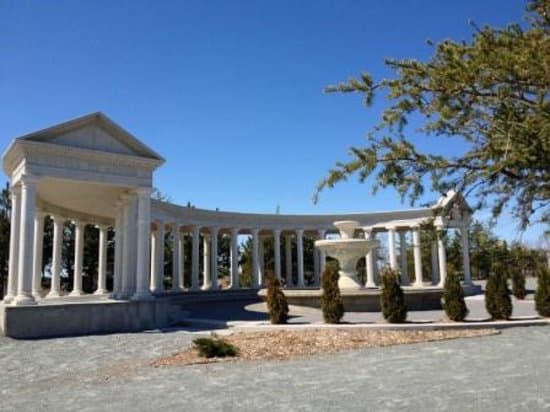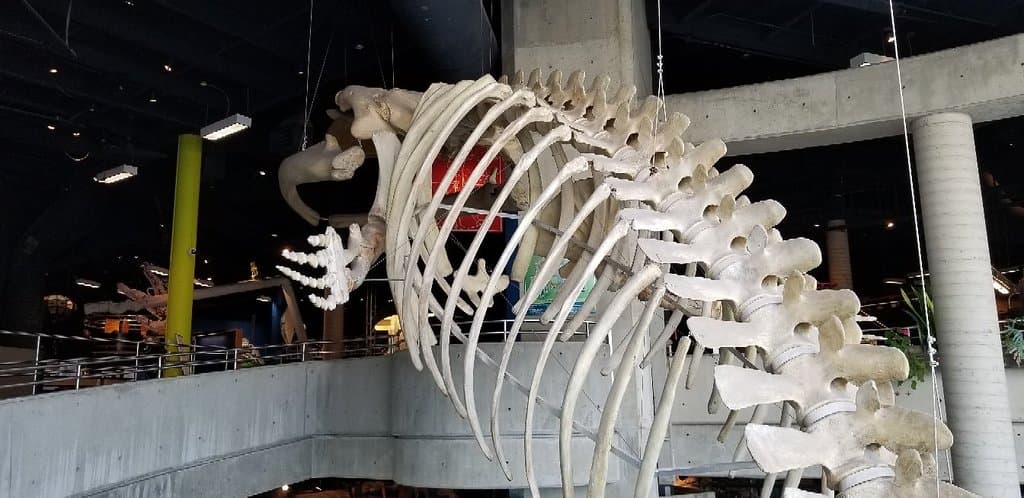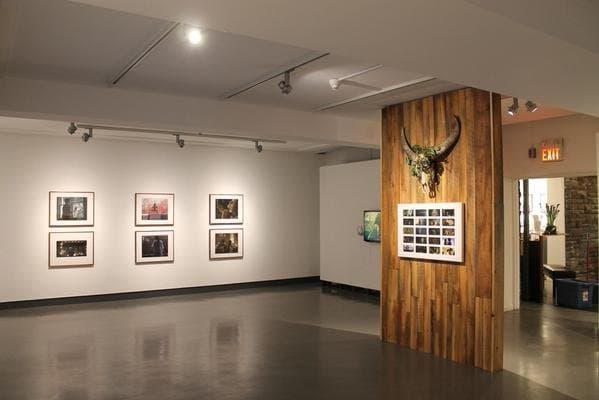Flour Mill Museum
Explore the fascinating history and industrial might of flour production at these preserved mills, often transformed into vibrant cultural hubs.
Highlights
Must-see attractions

Social
From TikTok & Reddit
Best Time
See mills in action
Flour Mill Museum
Best Time
See mills in action
Highlights
Must-see attractions
Explore the fascinating history and industrial might of flour production at these preserved mills, often transformed into vibrant cultural hubs.
"A unique blend of history, architecture, and interactive fun that brings the past to life!"
Check for Demonstrations
Confirm when the mill machinery will be operating to see it in action! :movie_camera:
Wear Comfortable Shoes
You'll likely be doing a lot of walking and climbing stairs. :athletic_shoe:
Highlights
Discover the most iconic attractions and experiences
Working Mill Machinery
Mill Interior
Witness the intricate gears and stones that once ground grain. Some mills still operate, offering a rare glimpse into historical processes.
Historic Silos
Exterior
These towering structures are often impressive architectural remnants, hinting at the mill's industrial past.
Interactive Exhibits
Museum Galleries
Engage with displays showcasing bread types, milling history, and the impact of flour production on communities.
Rooftop Views
Mill City Museum Rooftop
Enjoy panoramic cityscapes from a unique vantage point, often atop the preserved mill structure.
Plans like a pro.
Thinks like you
Planning Your Visit
Timing is Everything
Beyond the Grain
Best Times
Insider Tips
from TikTok, Instagram & Reddit
Check for Demonstrations
Confirm when the mill machinery will be operating to see it in action! :movie_camera:
Wear Comfortable Shoes
You'll likely be doing a lot of walking and climbing stairs. :athletic_shoe:
Look for Special Events
Some mills host art exhibitions or festivals, blending culture with history. :sparkles:
Verify Opening Status
Some older mills may be permanently closed or have limited access. Always check ahead. :warning:
Tips
from all over the internet
Check for Demonstrations
Confirm when the mill machinery will be operating to see it in action! :movie_camera:
Wear Comfortable Shoes
You'll likely be doing a lot of walking and climbing stairs. :athletic_shoe:
Look for Special Events
Some mills host art exhibitions or festivals, blending culture with history. :sparkles:
Verify Opening Status
Some older mills may be permanently closed or have limited access. Always check ahead. :warning:
Combine with Art
Discover how flour mills are becoming cultural hubs for art and design. :art:
What Travellers Say
Reviews Summary
Visitors often praise flour mill museums for their unique blend of industrial history and engaging exhibits, with many highlighting the impressive architecture and the opportunity to see preserved machinery. Some reviews note that certain mills may be permanently closed or have limited access, so verifying operational status is recommended.
"Wonderful landmark! History of early sudbury that any youngster should experience."
Solar Maxximum
"I watched the museum being picked up and carried to another location"
Ernest Loney
"Cute little museum"
Troy M
What People Like
What People Dislike
Frequently Asked Questions
🚇 🗺️ Getting There
Access varies by location. Many are accessible by public transport, with some offering parking. For example, Mill City Museum in Minneapolis is easily reachable by bus or light rail.
Parking availability differs greatly. Some have dedicated lots, while others are in urban areas requiring street parking or nearby garages. Check the specific museum's website.
Yes, many flour mill museums are located in cities and are accessible via public transportation. For instance, the Museum Mühlerama in Zurich is reachable by tram.
Accessibility can be a challenge due to the historic nature of these buildings. Some have made accommodations, like elevators, but it's best to check with the specific museum beforehand.
The Art Mill Museum is accessible via the Corniche. Visitors can use their One Pass for entry to the exhibition.
🎫 🎫 Tickets & Entry
Admission fees vary. For example, Mill City Museum in Minneapolis costs around $12 for adults. Some smaller mills might be free or by donation.
For popular museums like Mill City Museum, booking in advance is recommended, especially during peak seasons. For smaller, working mills, check if reservations are needed for tours.
Hours can be seasonal and vary significantly. Some are open daily, while others have limited days or are only open for special events. Always check the official website.
Discounts may be available for students, seniors, or groups. Some museums offer free admission days or special passes. Inquire directly or check their website.
Unfortunately, some flour mills are permanently closed or abandoned. It's crucial to verify the current operational status before planning your visit.
🎫 🧭 Onsite Experience
Expect to see historic machinery, learn about the milling process, explore interactive exhibits, and often enjoy unique architectural features like silos or rooftop views.
Some working mills offer demonstrations. It's best to check the schedule in advance to catch these live events.
Many museums offer guided tours that provide in-depth historical context and insights into the milling process. Check the museum's schedule for tour times.
The Flour Tower is an immersive multimedia elevator ride that takes you through eight levels, simulating the flour grinding process.
Absolutely! The industrial architecture, historic machinery, and often scenic locations offer fantastic photo opportunities.
🍽️ 🍽️ Food & Dining
Some larger museums have on-site cafes or restaurants, often featuring baked goods. Smaller mills might have a small shop or be near local eateries.
Picnic policies vary. Some may allow food in designated areas, while others prohibit outside food. It's best to check the museum's rules.
Expect baked goods, sandwiches, and light meals. Some cafes might highlight local ingredients or dishes inspired by the mill's history.
Many flour mill museums are in urban centers, so you'll likely find a variety of restaurants and cafes nearby. Research local options based on the museum's location.
Yes, many have gift shops selling local flour, baked goods, and souvenirs related to the mill's history.
📸 📸 Photography
The towering silos, intricate machinery, historic architecture, and panoramic views from rooftops are prime photo locations.
Generally, personal photography is allowed, but flash photography might be restricted in certain areas to protect exhibits. Always check signage.
Drone usage is typically prohibited in and around historical sites and museums due to safety and preservation concerns. Check specific regulations.
Focus on the scale of the machinery, the textures of old wood and metal, and the contrast between industrial elements and natural light.
Professional photography or commercial shoots often require special permits and advance arrangements. Contact the museum directly for their policy.
For Different Travelers
Tailored advice for your travel style
👨👩👧 Families with Kids
When planning, consider the physical aspects. Some mills involve climbing stairs, so check for accessibility if you have very young children or strollers. The visual impact of the silos and the historical context of food production can spark curiosity and lead to great conversations.
🏛️ History Buffs
Many museums provide in-depth information on the specific historical context of their mill, including its role in local development and any significant events it witnessed. Exploring these sites offers a unique perspective on how essential industries shaped the modern world.
🎨 Art & Design Enthusiasts
Even smaller mills might host temporary art installations or feature local artisans in their shops. The juxtaposition of pristine machines with creative works offers a fresh perspective on both industrial heritage and contemporary art.
Deep Dives
In-depth insights and expert knowledge
The Transformation of Mills into Museums
These repurposed mills often blend their original industrial character with contemporary museum design. Visitors can expect to see preserved machinery alongside interactive exhibits, art installations, and multimedia presentations. The Art Mill Museum in Doha, for instance, is set to become a cultural hub that integrates art, design, photography, and film within the iconic structure of a former flour mill. This fusion creates a unique visitor experience, offering a deeper understanding of the site's history and its evolving role in the community.
The success of these flour mill museums lies in their ability to tell a compelling story. They go beyond simply displaying old equipment; they narrate the impact of milling on local economies, the lives of workers, and the evolution of food production. By preserving these industrial landmarks, we gain valuable insights into our past and appreciate the ingenuity that shaped our present.
Experiencing the Milling Process
Interactive exhibits play a crucial role in bringing the milling process to life. At Mill City Museum, the Flour Tower is a multimedia elevator ride that takes you through eight levels, simulating the journey of grain and the stages of flour production. These engaging displays help visitors of all ages grasp the complexity and scale of historical milling operations, making the experience both educational and entertaining.
Beyond the mechanics, these museums often explore the historical context of flour production. You can learn about the types of grain used, the evolution of milling technology, and the economic significance of flour mills in their communities. Some exhibits even showcase hundreds of types of bread from around the world, connecting the raw product to its final delicious forms.
The Architectural Significance of Flour Mills
Inside, the architecture reflects the functional needs of milling. You'll find large, open spaces designed to house massive machinery, sturdy wooden beams, and intricate gear systems. The preservation of these interiors, as seen in the Molino de Vita in Puglia, allows visitors to appreciate the engineering marvels of their time, often juxtaposed with modern art exhibitions. The design is a blend of raw industrial utility and the aesthetic of a bygone era.
Many flour mill museums have been thoughtfully integrated into their surroundings, sometimes even built within or alongside the original structures. The Mill City Museum in Minneapolis is a prime example, ingeniously transforming ruins into a modern museum with a striking design that respects the site's history. This approach ensures that the architectural heritage is not only preserved but also celebrated, offering visitors a visually engaging and historically rich experience.



Social
from TikTok, Instagram & Reddit